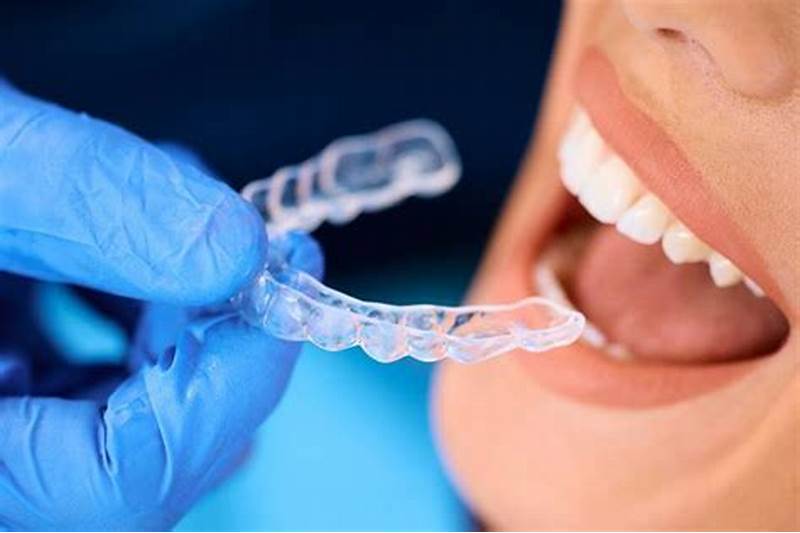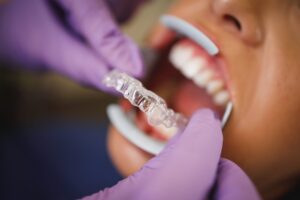
You’ve worn your aligners every day, followed the plan, and now your treatment is supposed to be done—but your teeth still aren’t quite where they should be. Does that mean something went wrong? Not at all. Invisalign refinements are a normal part of the process when teeth need a little more time to shift into place.
Think of refinements as an extra step to make sure your results are exactly what you expected. Many people need them, and they’re just a simple extension of treatment. Your orthodontist may recommend a few more sets of aligners to fine-tune the final alignment of your teeth.
If you’re wondering why refinements are needed, how they work, or what they cost, this guide will break it all down in simple terms. By the end, you’ll know exactly what to expect and how to get the best results from your Invisalign treatment.
What Are Invisalign Refinements?

You’ve been wearing Invisalign aligners for months, expecting your teeth to be perfectly straight by now. But what if they’re not? Invisalign refinements are the answer. These are additional aligners used after your main treatment to make sure your teeth end up exactly where they should be.
Sometimes, teeth don’t move exactly as planned. Maybe a small gap didn’t fully close, your bite still feels off, or a couple of teeth need a little more adjustment. That’s where refinements come in. Your orthodontist will check your progress and, if needed, order a new set of aligners to fine-tune the final results.
There are a few reasons why refinements might be necessary:
- Teeth moved slower than expected – Everyone’s teeth respond differently, and some take longer to shift.
- Not wearing aligners as much as required – Invisalign needs to be worn 22 hours a day to work properly. Missing hours can slow down progress.
- Unexpected changes – Natural differences in how your teeth and gums adjust can affect the final results.
Needing Invisalign refinements is completely normal. In fact, many patients require at least one round of them. It doesn’t mean your treatment failed—it just means your orthodontist wants to make sure your smile is as perfect as possible.
Signs You Might Need Invisalign Refinements
Ever looked in the mirror toward the end of your Invisalign treatment and noticed your teeth aren’t quite where you expected them to be? You’re not alone. Many people need Invisalign refinements to complete their smile transformation. But how do you know if you need them?
Here are a few signs your orthodontist might recommend refinements:
- Teeth still look slightly crooked or crowded – Some teeth may not have fully shifted into place.
- Gaps between teeth haven’t closed – If small spaces remain, refinements can help bring everything together.
- Bite issues remain – An overbite, underbite, or crossbite might still need a bit of correction.
- Your orthodontist spots slow progress – During check-ups, they may notice that some teeth haven’t moved as expected.
Several factors can increase the likelihood of needing refinements:
- Not wearing aligners enough – Invisalign only works if worn 22 hours a day. If you took them out too often, your teeth may not have moved correctly.
- Teeth respond differently for everyone – Some people’s teeth shift faster, while others need extra time.
- The original treatment plan needed adjustments – Your orthodontist may need to tweak the final positioning based on how your teeth moved.
If any of these apply to you, don’t worry. Refinements are just a normal part of the process to ensure your teeth end up exactly where they should be.
The Refinement Process: How It Works
If you need Invisalign refinements, the process is pretty simple—it’s just an extension of your current treatment. Here’s what to expect:
Step 1: Evaluation & Consultation
Near the end of your Invisalign treatment, your orthodontist will check to see if your teeth have moved as planned. They’ll take a close look at your bite, tooth alignment, and any remaining gaps. If things aren’t quite perfect, they’ll take digital scans or impressions of your teeth to see what adjustments are still needed.
Step 2: Creating New Aligners
Once your orthodontist knows what changes are needed, they’ll order a new set of aligners designed specifically for those final tweaks. These refinement aligners look and feel just like your previous Invisalign trays, but they’re customized to make the last necessary adjustments.
Step 3: Wearing the Refinement Aligners
Just like before, you’ll need to wear your refinement aligners 20-22 hours a day to keep your teeth moving in the right direction. The number of refinement trays you need will depend on how much correction is left. Some people only need a few, while others might need a couple of extra months of aligners to get everything in place.
Step 4: Ongoing Monitoring
Your orthodontist will check your progress at regular appointments. If your teeth still need more movement after the first set of refinements, another round of aligners might be needed. The good news? Refinements usually take less time than your original Invisalign treatment, so you’re already in the final stretch!
How Long Do Invisalign Refinements Take?
Wondering how much longer you’ll need to wear your aligners? Invisalign refinements don’t add as much time as you might think. Most refinements take about 3 to 6 months, depending on how much fine-tuning is needed. Some people only need a few extra weeks, while others might require a couple of additional rounds to get their teeth in perfect position.
The good news? Even with refinements, Invisalign still works faster than traditional braces for most people. Since these extra aligners are just making small adjustments, they won’t set you back too much.
One of the biggest factors in how long refinements take is how well you follow the instructions. Wearing your aligners for at least 22 hours a day is key to keeping your treatment on schedule. If you take them out too often, your teeth might shift too slowly, and you could end up needing even more time.
If your orthodontist recommends refinements, don’t stress—it’s just part of the process for many people. A little extra time now means getting the smile you actually want in the end.
Cost of Invisalign Refinements
Worried about how much Invisalign refinements might cost? The price can vary, but it all depends on a few key factors.
What Affects the Cost?
- How many refinement trays you need – If only a few minor tweaks are needed, the cost will be lower than if multiple sets of new aligners are required.
- Your Invisalign plan – Some plans include refinements, while others may charge extra.
- Your orthodontist’s pricing policy – Some providers offer refinements as part of the original treatment cost, while others charge separately for them.
Typical Invisalign Costs
Your overall Invisalign treatment cost will depend on the type of plan you’re on:
- Comprehensive Invisalign: $3,000 – $8,000 (often includes refinements).
- Lite Invisalign: $3,000 – $4,500 (may include a limited number of refinements).
- Express Invisalign: $1,800 – $4,000 (refinements usually not included).
Some orthodontists include one or two rounds of refinements at no extra charge, while additional refinements may require an extra payment. This is why it’s important to ask your provider upfront about their policy.
If you’re nearing the end of treatment and need refinements, check with your orthodontist to see if they’re covered. Knowing what to expect ahead of time can help avoid surprises when it comes to cost.
Ways to Pay for Invisalign Refinements
Worried about how to cover the cost of Invisalign refinements? The good news is that there are several ways to make them more affordable.
- Dental Insurance
Some dental insurance plans cover refinements, especially if Invisalign was recommended for health reasons, like fixing a misaligned bite. Every plan is different, so it’s a good idea to check with your insurance provider to see what’s included.
- Payment Plans
Many orthodontists offer monthly payment plans that let you spread out the cost of refinements instead of paying all at once. If paying upfront isn’t an option, ask your provider about financing options.
- HSA & FSA Accounts
If you have a Health Savings Account (HSA) or Flexible Spending Account (FSA), you can use pre-tax dollars to help pay for refinements. This can be a smart way to lower your out-of-pocket costs.
- CareCredit & Third-Party Financing
If your insurance won’t cover refinements, CareCredit and other healthcare financing options can help. These work like credit cards specifically for medical and dental expenses, allowing you to pay over time.
Before starting refinements, ask your orthodontist about your payment options to find the best plan that works for your budget.
Preventing the Need for Invisalign Refinements
While Invisalign refinements are common, following the treatment plan carefully can reduce the chances of needing them. Here’s what you can do:
- Wear your aligners at least 22 hours a day – Taking them out too often can slow progress.
- Follow your aligner change schedule – Switching trays too early or too late can affect movement.
- Keep up with oral hygiene – Cavities or gum issues can interfere with treatment.
- Store aligners properly – Lost or damaged trays can delay progress.
- Don’t skip orthodontic check-ups – Your provider can catch and fix issues early.
Sticking to these habits can help keep your treatment on track and reduce the need for refinements.
Final Steps: Moving to Retainers
Once your Invisalign refinements are done, the next step is wearing a retainer to keep your teeth in place. Without one, your teeth can shift back, undoing all your progress.
Why Retainers Matter
- Prevents teeth from shifting back after treatment.
- Keeps your new smile in place long-term.
Types of Retainers
- Invisalign Vivera Retainers – Similar to Invisalign aligners but thicker.
- Hawley Retainers – Wire and acrylic, removable.
- Permanent Retainers – Fixed behind the teeth.
How Long to Wear Them
- Full-time for the first 6 weeks.
- Nighttime wear indefinitely to maintain results.
Wearing your retainer as instructed ensures your smile stays perfect for years to come!
Final Thoughts on Invisalign Refinements
Invisalign refinements are just a normal part of the process to help you get the best possible results. If your teeth need a little more time to shift into place, refinements ensure that your smile turns out exactly as planned.
Needing refinements doesn’t mean your treatment failed—it just means your orthodontist is fine-tuning the final details. Staying committed to wearing your aligners and following instructions will help you get the best outcome.
Understanding the cost, timeline, and ways to prevent refinements can make the process smoother. A little extra time is worth it when it means achieving a perfectly aligned smile!
Get the Best Invisalign Results with Palo Alto Orthodontics
If your smile isn’t quite where you want it to be, Palo Alto Orthodontics can help with Invisalign refinements. Our expert team ensures every patient achieves their perfect smile with customized treatment plans.
Schedule a consultation today to see if you need refinements and keep your Invisalign journey on track!
Visit Palo Alto Orthodontics to learn more!



